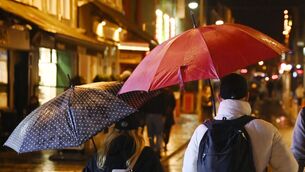Pathologist: Celine could have been saved
Dr Michael Curtis also told her husband’s murder trial at the Central Criminal Court that it was unlikely she would have died had she received prompt medical attention.
The pathologist was giving evidence at the Eamonn Lillis trial for allegedly murdering his wife on December 15, 2008. The 52-year-old TV advert producer has pleaded not guilty to her murder at their home at Rowan Hill, Windgate Road, Howth.













